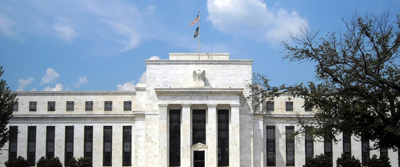Interest Rate Hike Hits Oil Hard
Nick Cunningham
 Oil prices have been slammed over the past week, dragged down by a variety of forces, including soaring U.S. shale production, higher-than-expected output from Russia, and worries about global demand. On Wednesday, the U.S. Federal Reserve decided to pile on. Oil prices have been slammed over the past week, dragged down by a variety of forces, including soaring U.S. shale production, higher-than-expected output from Russia, and worries about global demand. On Wednesday, the U.S. Federal Reserve decided to pile on.
The central bank hiked interest rates by a quarter-point yet again, the fourth time this year. That was largely expected. But the details that market watchers were more concerned with were the Fed’s intentions for 2019. Fed chairman Jerome Powell, in the face of withering pressure from the White House, signaled his intention to hike rates two more times in 2019. To be sure, that was down from a previous plan of three rate increases, but it wasn’t exactly the pullback that President Trump had wanted. Powell dismissed questions about political pressure from the President, saying that “nothing will cause us to deviate from” the job at hand.
“Inflation has still remained just a touch below two percent. So I do think that gives the committee the ability to be patient in moving forward.” Powell told reporters. He noted that there are some warning signs in the global economy, but that U.S. “economic activity has been rising at a strong rate,” which made the bank comfortable with its decision to continue with its monetary tightening policy.
The central bank made some slight tweaks to its forward-looking language, suggesting that it may ease up on interest rate hikes if the economy deteriorates.
Still, stocks plunged on the news, as did crude oil. As of Thursday, WTI was down close to $46 per barrel and Brent was hovering at about $55 per barrel, the lowest levels in 15 months. “[M]any market participants clearly still believe the Fed’s view is overly optimistic, as US stock markets came under pressure amid fears of excessive tightening of monetary policy and bond yields fell,” Commerzbank said in a note.
It’s hard to overstate the influence that the Federal Reserve has over the global economy. The rate tightening impacts the macroeconomic outlook of most countries while also affecting prices over everyday items for billions of people.
The hawkish approach from the central bank has created a series of forces that could negatively impact crude oil. First, oil is priced in dollars, so to the extent that interest rate hikes strengthen the dollar, they push down the price of oil. Second, a stronger dollar means that global investors are pulling their money out of other currencies and pivoting into the dollar. In other words, rate hikes put downward pressure on other currencies.
Weaker currencies in, say, India, Argentina, Turkey or any other country makes crude oil vastly more expensive. Consumers in these countries may not benefit from the current plunge in crude oil prices if their currencies are depreciating at the same time. The New York Times provides a detailed account of how rising costs for a variety of goods and services in India – including fuel – is putting a squeeze on millions of people. Much of the blame can be put on rate tightening from the U.S. Federal Reserve.
Finally, higher interest rates could slow economic activity more generally. Borrowing becomes more expensive, debt becomes costlier to service. A slowdown in the global economy could undercut crude oil demand.
This is occurring against a demand backdrop that has already begun to sour. Global oil demand is showing some signs of slowdown, particularly in China and India where two-thirds of the growth in demand is supposed to come from. Analyst at JBC Energy say that demand may only rise by 888,000 bpd in 2019, the slowest rate in eight years.
Others are starting to say the same thing. “There’s a lot of uncertainty about the future right now and so the demand slowdown could become a self-fulfilling prophecy,” Amrita Sen, co-founder of Energy Aspects, told the Wall Street Journal. She recently downgraded her demand forecast to just 1 million barrels per day.
The IEA recently reiterated its demand forecast for 2019 at 1.4 mb/d, but the Fed’s recent actions might force the agency to revise down that figure in the months ahead.
By Nick Cunningham of Oilprice.com

Nick Cunningham is a Vermont-based writer on energy and environmental issues. You can follow him on twitter.
oilprice.com
| 

![[Most Recent Quotes from www.kitco.com]](http://www.kitconet.com/charts/metals/gold/t24_au_en_usoz_2.gif)
![[Most Recent USD from www.kitco.com]](http://www.weblinks247.com/indexes/idx24_usd_en_2.gif)
![[Most Recent Quotes from www.kitco.com]](http://www.kitconet.com/charts/metals/silver/t24_ag_en_usoz_2.gif)


